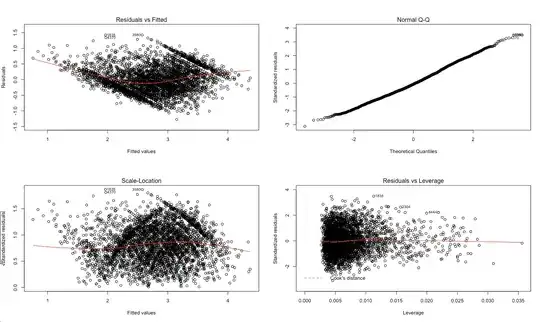I am currently attempting to model student achievement using both categorical (mostly demographic factors) and numerical (exam scores) data.
I am specifically looking for an explanation of the observed behavior in the Scale-Location diagnostic plot (below), so that I can have a better understanding of the efficacy of the model. In particular, are the trends in that graph (sort of curving lines) an artifact of the parallel line behavior in the first plot?
